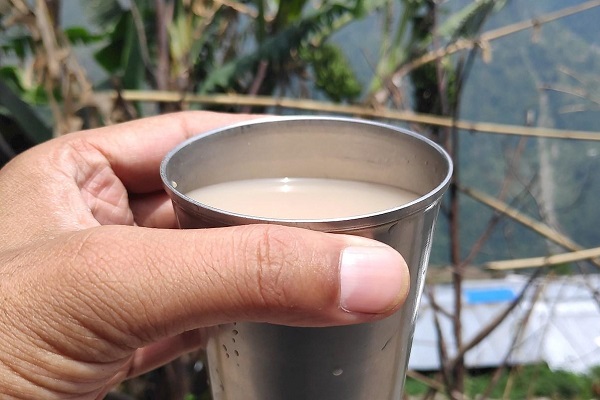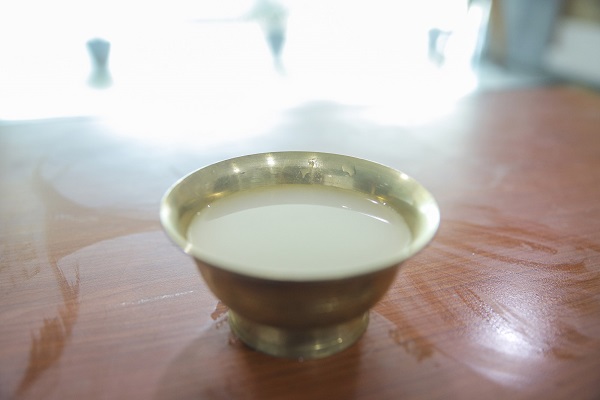In the rugged, high-altitude plateaus of Tibet, where the air is thin and the temperatures dip low, a humble drink has been woven into the fabric of daily life for centuries. Chang, as known as chhaang, a traditional barley-based fermented beverage, is more than just a drink—it’s a symbol of hospitality, community, and spiritual connection.
While chang may be unfamiliar to many, it holds an essential place in Tibetan society. In this article, we’ll dive into the process of making chang, its various types, and its profound cultural influence across Tibet.
What is Chang?
At its core, chang is a lightly fermented alcoholic beverage made from grains—typically barley, though other grains like millet and rice are sometimes used. It’s often compared to beer in its production, but with notable differences. The alcohol content is usually around 3-7% ABV, making it a relatively low-alcohol drink compared to the stronger barley wines or beers found elsewhere. Chang is typically served in a cloudy, milky form, with a distinct, tangy, and earthy flavor profile that reflects the barley it’s brewed from.
In Tibet, chang is more than a beverage—it’s a cultural cornerstone. It’s consumed daily by many Tibetans, and it’s present in nearly every facet of life: from family meals and village gatherings to religious ceremonies and festive occasions.

The Process of Making Chang
Making chang is a relatively simple process, yet it requires skill and patience to perfect. It begins with the barley, a hardy crop that thrives in the high-altitude climate of the Tibetan Plateau. Tibetan barley, or qingke, is prized for its resilience and nutritional value, and it’s the primary grain used for brewing chang.
- Malting the Barley
The first step in making chang is malting the barley. The grains are soaked in water for a day or two, then allowed to germinate, or sprout. This process activates enzymes in the barley, which begin converting the starches into fermentable sugars. Once the barley has sprouted, it’s dried to stop the germination process and to preserve the sugars created. - Fermentation
After the barley is malted, it’s mixed with water and sometimes a bit of rice or millet, depending on the desired flavor. The mixture is then fermented in large containers for several days. A specific yeast or fermentation starter, often passed down through generations, is introduced to kick-start the fermentation. In traditional settings, the fermentation can last anywhere from a few days to a week, with the alcohol content rising gradually. - Serving and Enjoying
Once fermentation is complete, chang is ready to be enjoyed. It is usually served in communal bowls or wooden cups and consumed in a group setting, which is an important part of Tibetan culture. Chang is often drunk with meals, during social gatherings, or shared between friends and family as a gesture of hospitality. It is sometimes filtered before drinking, but it typically remains cloudy and slightly effervescent. The fermentation process creates a light carbonation, which adds to its refreshing nature.
The taste of chang is distinctly malty with earthy, tangy undertones. Some varieties can have a subtle sweetness or even a mild spiciness, depending on the ingredients and the length of fermentation. The drink’s low alcohol content makes it perfect for social occasions, allowing people to drink for longer periods without becoming overly intoxicated.
The Cultural Significance of Chang
In Tibetan culture, chang is far more than a beverage—it’s a central element of hospitality and social bonding. The act of sharing chang is symbolic of community and togetherness, a way of inviting others into one’s life and home. Offering a guest a bowl of chang is considered a gesture of respect, and the drink often accompanies important life events, including religious ceremonies, weddings, and festivals.
Social and Religious Gatherings
Tibetans often gather in family circles, monasteries, or community halls to drink chang together. It’s common for people to sit in a circle, passing a large communal bowl of chang from person to person. This shared experience creates a sense of unity and belonging. In religious rituals, chang is sometimes offered to deities or spirits as part of the ritual offerings. It is believed that the drink helps to establish a connection with the divine, ensuring good fortune and spiritual balance.

A Daily Beverage
While chang is undoubtedly significant during celebrations, it’s also consumed daily by many Tibetans. It provides a source of warmth and hydration, which is especially important in the cold, high-altitude environment of Tibet. The nutritional value of chang—derived from the barley and other grains—adds to its appeal, providing a natural energy boost. In remote villages, where access to other beverages might be limited, chang is often the go-to drink throughout the day.
Cultural Identity and Tradition
The importance of chang extends beyond its role as a drink—it’s a tangible link to Tibetan heritage. The process of brewing chang has been passed down through generations, with each family or community holding their own unique methods and recipes. The drink is an expression of Tibetan culture, embodying the values of hospitality, unity, and respect for tradition. As modern influences continue to reach Tibet, chang remains a steadfast symbol of cultural pride and continuity.
The Influence of Chang on Tibetan Hospitality
One of the most striking aspects of chang is its role in Tibetan hospitality. The act of offering chang to guests is an essential part of Tibetan customs. Whether you’re a close friend, a family member, or even a stranger, being offered a bowl of chang signifies a welcome into the fold of Tibetan society.
The practice of chang drinking also fosters a sense of equality. Unlike other drinks or foods that might be reserved for specific groups or occasions, chang is shared among all, regardless of age or status. This egalitarian aspect reflects the central role of community in Tibetan culture, where the collective well-being is valued over individual distinction.
Chang in Modern Times
As Tibet continues to modernize and evolve, chang remains a cherished part of the region’s cultural fabric. While it’s not as commercially widespread as other alcoholic beverages, chang is still very much alive in Tibetan homes, monasteries, and villages. In some urban areas, commercial versions of chang are produced, and the drink is gaining recognition outside of Tibet, especially among those interested in traditional and craft brewing methods.
However, it’s the traditional, homemade versions of chang that truly embody the essence of Tibetan culture. The process of crafting chang from scratch—whether in a rural household or a mountain monastery—is an act of cultural preservation and a testament to the enduring importance of tradition in the face of modernity.
In Tibet, chang is more than just a drink; it’s a way of life. From its origins as a humble fermented barley beverage to its vital role in social and spiritual practices, chang is a drink that brings people together. Whether enjoyed casually with a meal or ceremonially during a festival, chang is the heart of Tibetan hospitality, unity, and tradition. It stands as a testament to the resilience of Tibetan culture and its ability to adapt while staying true to its roots.
If you ever find yourself in Tibet, don’t miss the opportunity to taste chang—not just for its unique, earthy flavor but for the sense of connection it provides to the land, the people, and the centuries-old traditions that make Tibet so special.










